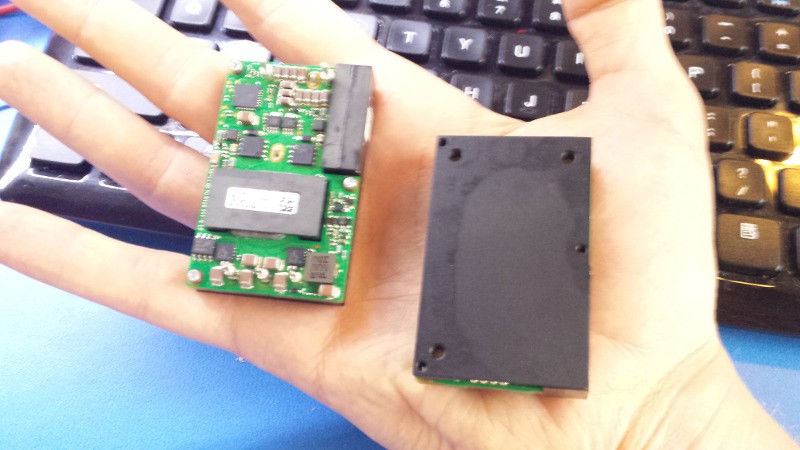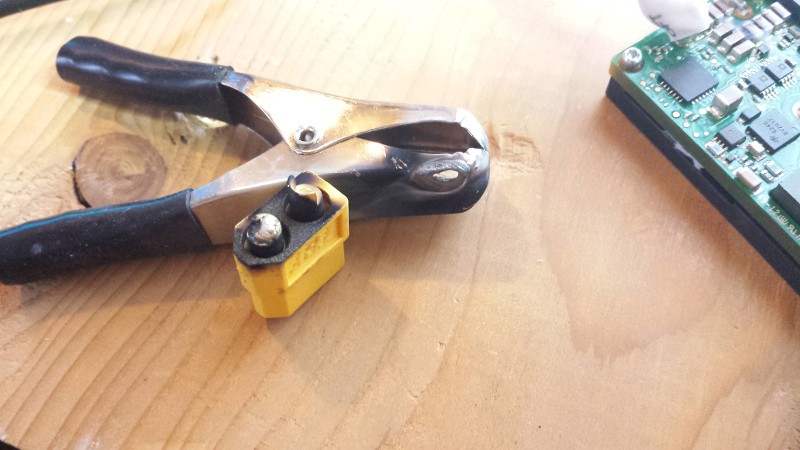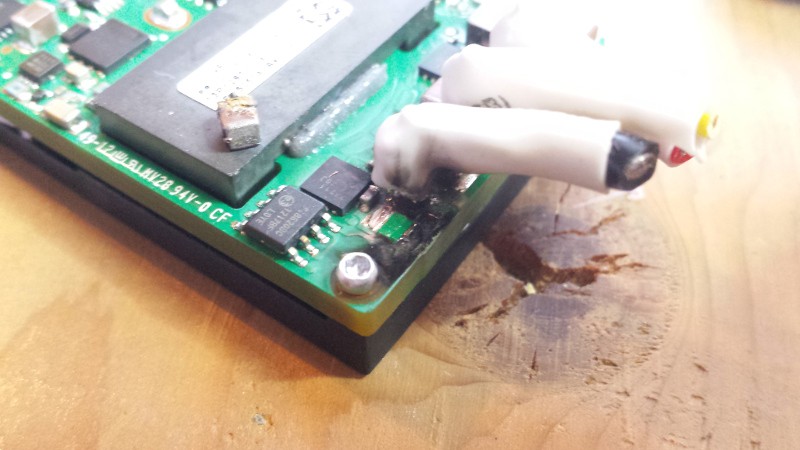I try to be safe when I mess around with electronic stuff. I've been in various industries long enough that constant PPE use is now the norm. Definitely a change from my youth; I remember using a 6kv/30mA neon sign transformer to figure out my concrete driveway conducts electricity. When I walk in to my workshop, step one is donning a good pair of safety glasses. Ah, foreshadowing...
In any case, the power converters came in and I picked 'em up yesterday. As expected, they're TINY:

I wired one up through the slip ring, charged up the LiPo batteries (16S configuration!), connected everything to a 12vdc LED strip, and grounded the 'on-off' terminal to power the unit on. And.............. nothing. I measured a bit over 60vdc across the power terminals which is above the unit's spec, so I disconnected a battery and shorted its terminal to get around 49vdc (on the low end). Still nothing. Hmmm...
Mistake #1: I didn't fuse the input supply. Quite stupid, I know; I was in a rush and didn't have a spare 25amp fast-acting fuse lying around. I thought I might have misread the datasheet (I was really pulling at straws at this point), so I reversed the input polarity on the converter. That was mistake #2:

As we all know, high-performance LiPo batteries don't mess around. These are rated at 50c maximum discharge; they're 890mA units, so they're DESIGNED to sink up to 45 amps or so. Do the math at 60 volts; that's a lot of power!
In any case, I took a break and thought about how stupid it was to not fuse the battery system, given that I'd just vaporized a hole in a large alligator clip (and a good portion of the brass terminal disappeared). I checked the datasheet for the tenth time and realized that the on-off circuit should show 8 volts or so to ground; I only measured 3 through the slip ring, so I decided to run a direct link from the on-off terminal back to the power converter (hoping I could offset any voltage drop I was seeing across the small-gauge slip ring wires). Which brings us to mistake #3:

I spent a lot of time carefully soldering the power leads (now cut off in that picture) to the board and heat-shrinking them; then when I wanted to bypass the slip ring, I tried to manually short the yellow switching lead to the exposed part of the negative terminal post. Naturally, my hand slipped a bit and the wire touched the surface mount capacitor on the board. The cap fried, the trace vaporized, and one of my converters is now toast! I pulled the cap off (you can see it on top of the metal heat sink in the picture); I might be able to replace it, but the trace is pretty badly damaged.
In any case, I'm headed out of town again for the holiday weekend. With luck, I'll read the datasheet again next week and realize that I'm hooking the converter up wrong. I might put in a call to GE too, since I don't want to risk frying my second (and last) converter. And yes--I'll order and install an inline fuse holder. Stupid, stupid, stupid.
- Zach
 zakqwy
zakqwy
Discussions
Become a Hackaday.io Member
Create an account to leave a comment. Already have an account? Log In.